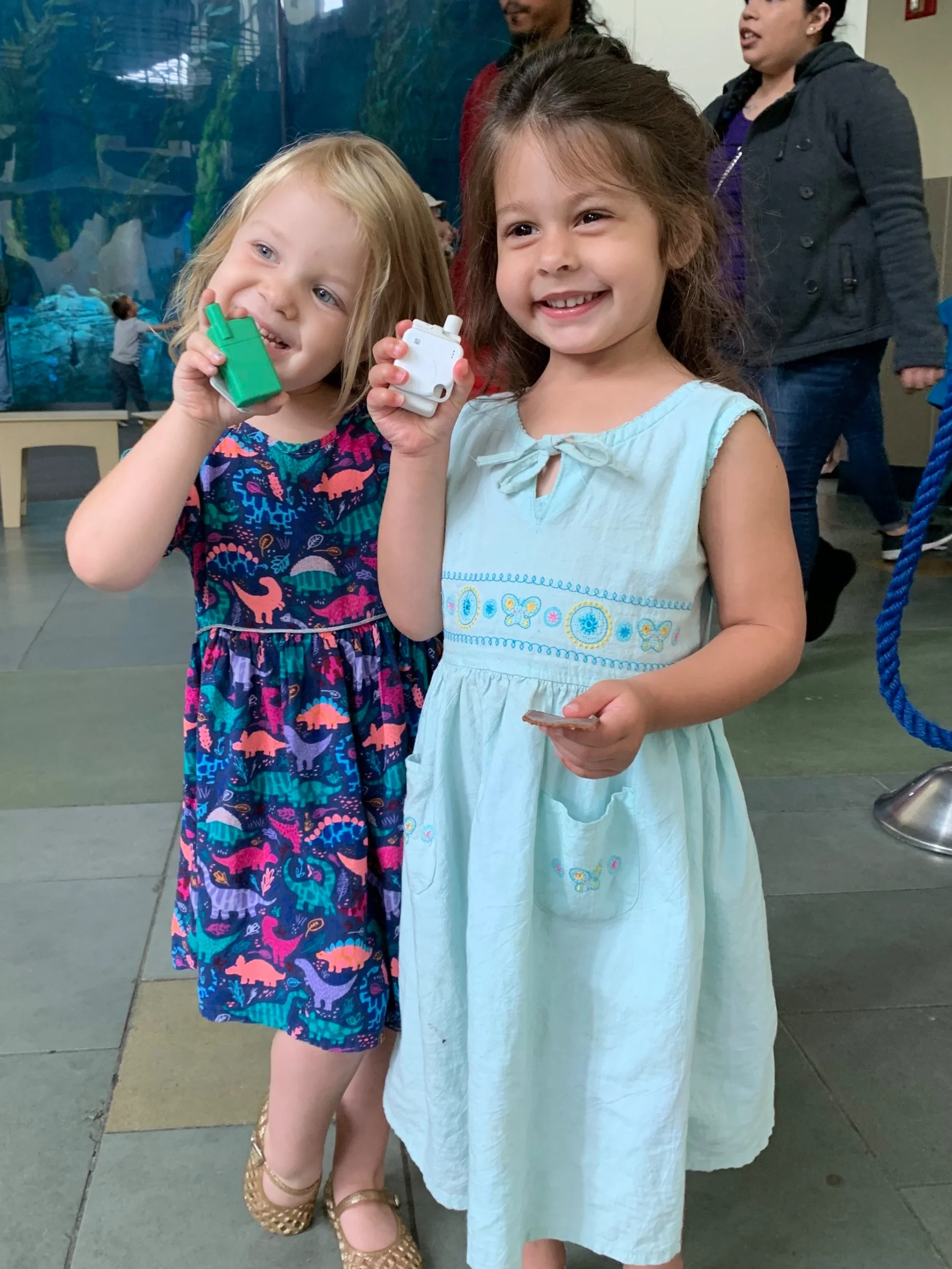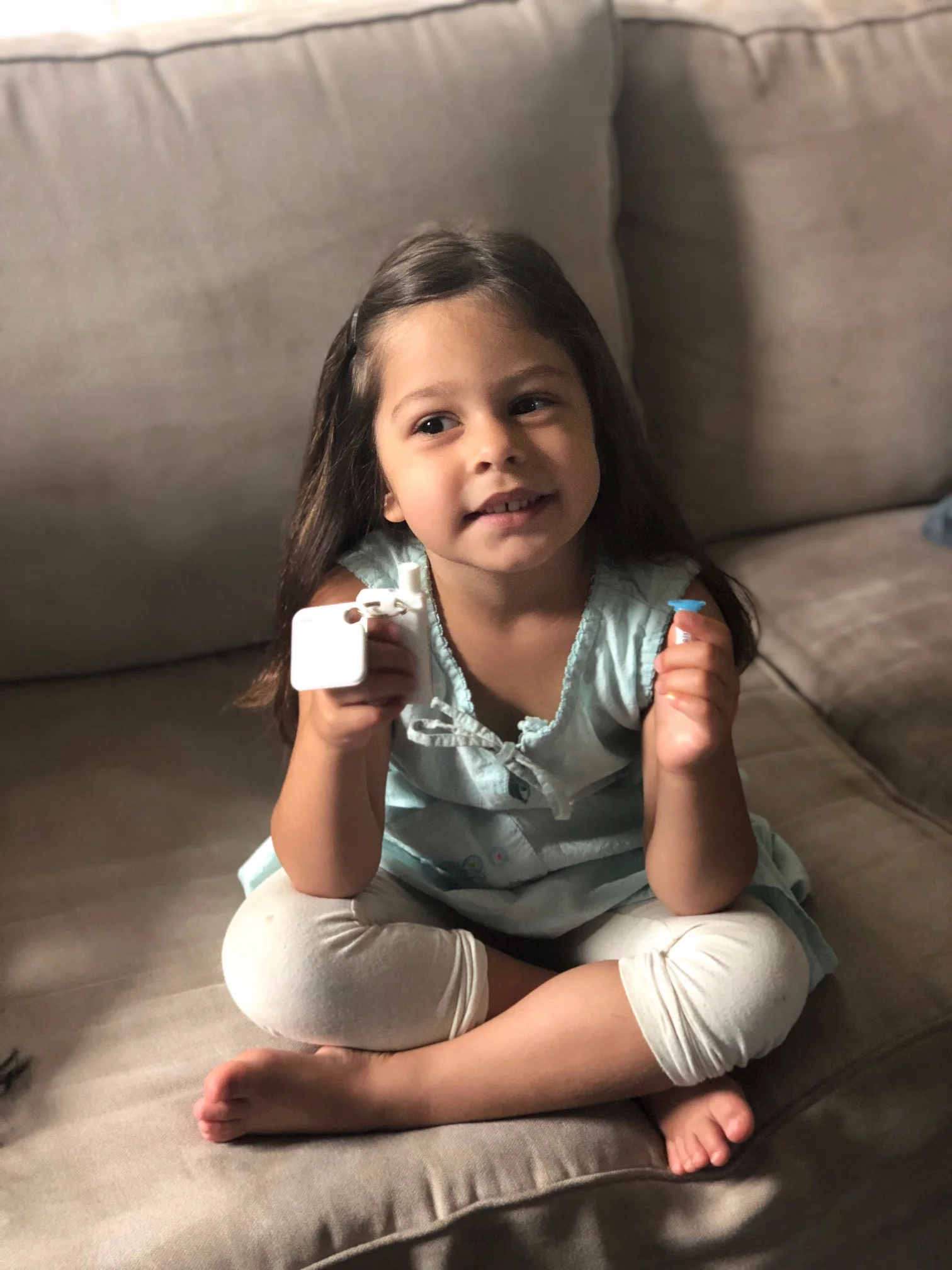Looping with Little's
I haven’t tried sharing my experience with Looping with our daughter, because in all honesty, I have a little bit of imposter syndrome with anything I do. But, after attending FFL, having the opportunity to meet with so many other Little Looper mama’s (there were SEVEN kids in Kiddie Kove just in the one age group!) it was really helpful to hear other people’s experiences and, to be honest, frustrations. We also attended a SoCal Loopers meeting yesterday where my daughter was the youngest but still among a handful of kids that were either already Looping or considering it. I’m hoping that sharing our experience so far might be helpful to all the wonderful people that aren’t able to spend an entire week bonding with our tribe. I’m also hoping everyone will be kind and won’t judge what we do or don’t do. Part of the struggle of having an online presence is making decisions about what we do and do not share.
I think I place too much burden on myself, because having T1D for so long, and having so many collective years between my husband and myself, I feel like we should know more and do “better”. But I forget, that means I have had more time to burnout. We have T1D x 3, which again, also means more chances of burnout. More calls with DME, more site failures, more prescriptions to fill, more lows, more highs, in a shorter amount of time than the average person. T1D takes up more space in our lives. I genuinely don’t think that an a1c in the 5’s is the goal. A life with T1D being less of a burden is MY goal. Your goal might be different. But, if you’re Looping with your little one, I’m guessing your goal is similar, and/or that you just want to start sleeping through the night with a little more peace of mind again. Because you feel such a heavy weight on your shoulders of trying to live between the lines and want to stop constantly reacting to highs and lows.
It had been about a year and a half since I had started Looping before we began our daughter on it, that I had honestly forgotten how long it took me to dial in my own settings to get to the point I was at. I do clearly remember feeling as though I was doing something wrong when my lines weren’t half as flat as some of the pretty graphs I had seen on the FB group. When we started Looping with our daughter, I applied some of the things I knew were working for me. And then realized that should not have been the case. After struggling to have my mom watch her, where they didn’t know how to manipulate Loop to do what we wanted it to do, I reached out to everyone I could think of that was supposed to know better. I shared Nightscout reports with Katie DiSimone, Kate Farnsworth, Gary Scheiner and Jenny Smith just to name a few. Most of them told me that without true basal testing, there wasn’t much else they could do to help me. But they did give me a few tips that have helped. Here are some of the things I have figured out since Looping myself for over 2 years now and have figured out through help and experience with our daughter’s Loop journey so far:
I was extremely confident in our settings pre-loop. All of that, especially basals, change once your DIA changes. Basal test (it’s more like tweaking with littles, because we honestly have never been able to properly basal test with her) again once you are Looping. Especially at night. We went from her highest basal being 0.2 to 0.4.
Jenny Smith suggested we do basal testing in one-hour increments. That honestly sounded exhausting, but we have been able to do chunks of testing here and there instead. Night time testing is obviously easier, and Gary Scheiner told us to use 3 hours instead of 4 hours of no bolus or food with littles. Morning basals were tested by letting her sleep in and pushing back breakfast by an hour and a half.
For those of you who also struggle with the morning blood sugar spike once they wake up that has nothing to do with the time of day, but just because of when they wake up, I would suggest trying the Dev branch overrides for both morning spikes and evening growth spurts when the kiddo’s are sleeping.
Set a low max basal to start out when still dialing in settings. Katie DiSimone suggested this when I told her we weren’t able to properly basal test with her just yet and needed help NOW. The usual advice (not for littles) is to set it at 3-4x your regular highest basal. But when your settings aren’t accurate, and Loop is basically acting off false information, you’re better off setting a conservative max basal to prevent Loop from being overly aggressive.
Turn off the IRC setting. Tap on the predictive graph on your homescreen and toggle off the Integral Retrospective Correction. Again, don’t want Loop to be overly aggressive with inaccurate settings.
I started out with one target range for her, but my husband thought that was too aggressive and set it as a wider range (110-140 vs. the 110-110 I had initially started with). That and the lower max basal seemed to work great so we left it. But since traveling, everything has been haywire and Kate Farnsworth suggested we go back to the one target because otherwise it is too confusing for the app. So we went to a more conservative goal of 120-120 (along with some higher basal’s at night; again, and some more dialing in of her ISF). All of this was before the issue with clicks on the pods with little’s and the Dev branch that helps with this issue was even released. We are now on Dev branch and back to the wider range of 110-140 as our target.
Rollercoasters usually mean too aggressive of an ISF. That means the ISF number needs to be higher (aka going from 240 to 250 instead). For reference, my own ISF is 140 while my daughter has an ISF of 270 during the day and 170 at night (darn growth hormones).
I suggest being in Open Loop for at least 2 weeks to a month to test things out and get comfortable. Then I would run auto-tune. Auto-tune is the closest I’ve come to really testing basals with my daughter outside of what I referenced above. If you have big differences in your ISF like we do, choose the one you want to test before running autotune. I was more confident in our night time ISF thanks to our true nighttime basal tests, so I used my day time ISF when plugging in settings for auto-tune. I was also confident in her morning carb ratio from a breakfast we know how to bolus for really well, so I used her carb ratio for the rest of the day for the test as well (again, for reference, her morning carb ratio is 7 and the rest of the day it is 17).
Start with a more conservative target. Steady at 140 is better than yoyo-ing between 80-250 (what we started with). You feel awful, and children have enough reasons to have meltdowns as it is. If your settings are too aggressive, having a goal of 140 will make it less likely to lead to scary lows, which I worry about more than highs with her.
I highly suggest keeping an extra phone or iPod with Loop and Dexcom built on it for backups. Sure, we have our PDM and travel with it just in case. But I also travel with our backup phone so that if something happened to any of our phones, we could keep on Looping without too much of a hiccup in our lives.
I also highly suggest purchasing a Tile and Name Bubbles to slap on your Rileylink and phone. Kids are buggers that like to lose things.
Keep in mind, everything I wrote here was BEFORE the issues with IOB with pod’s vs MDT were discovered. And these are the things that helped us before we switched to the Dev branch, which has made a huge difference. So the other thing to keep in mind, is these are the kinds of things you need to be ok with if you are considering Looping with your little. Knowing that there ARE bugs that still need to be fixed, that it is not a set it and forget it system, and you need to be willing to put the time and effort into it.


